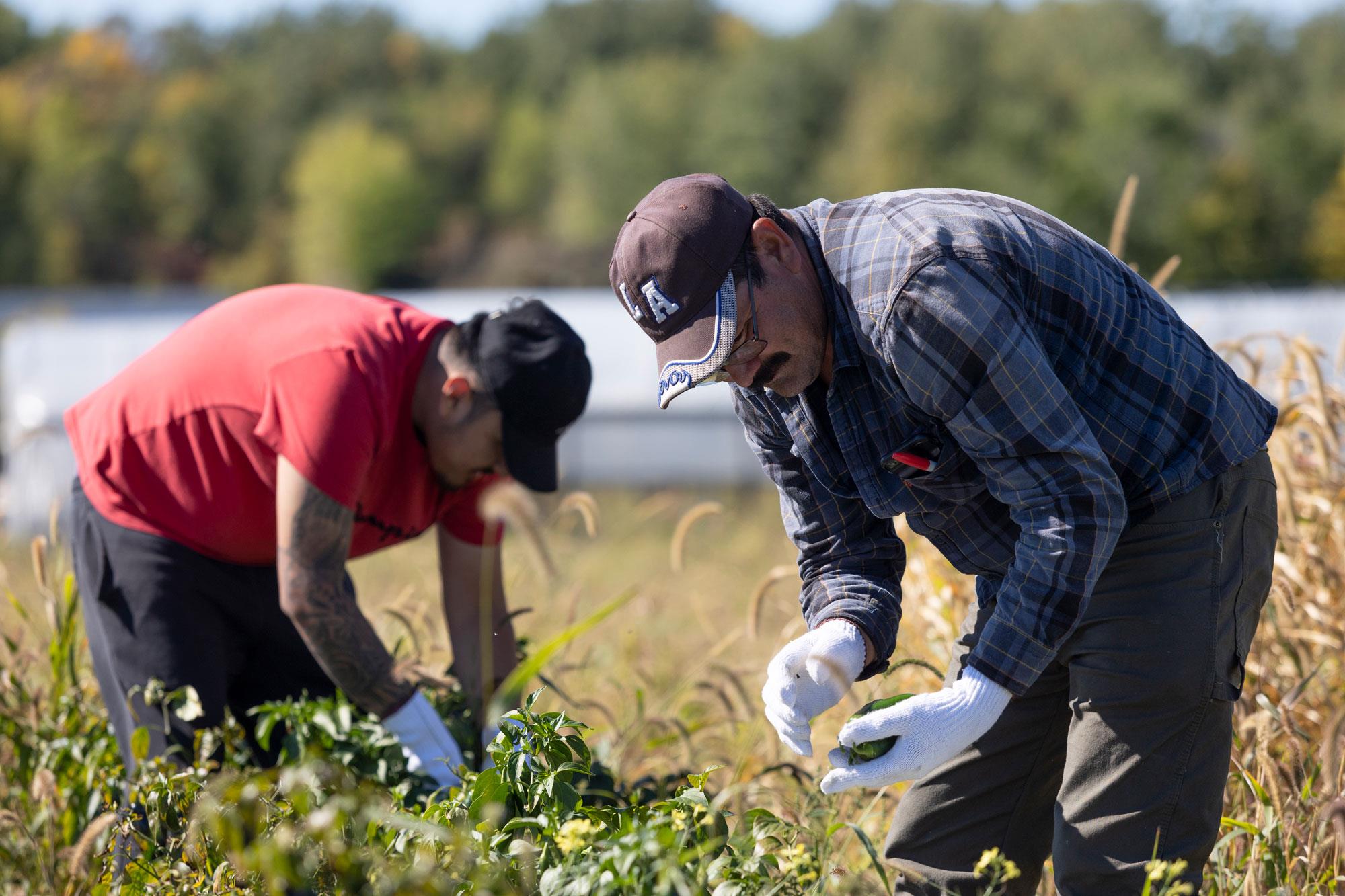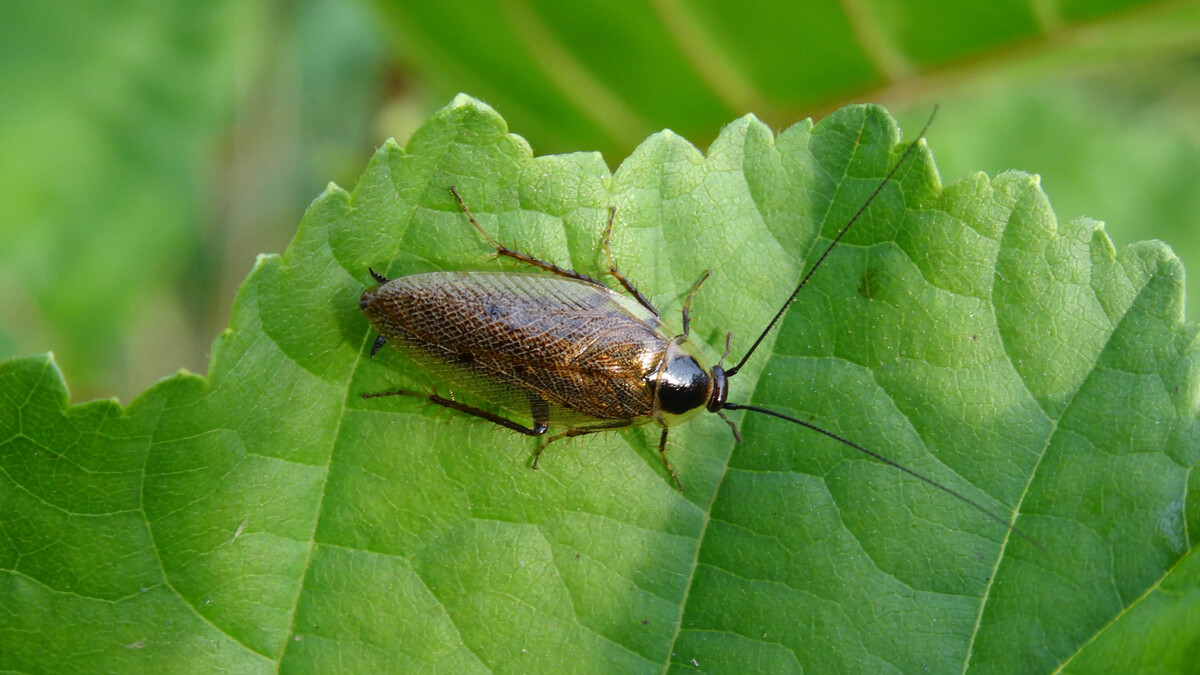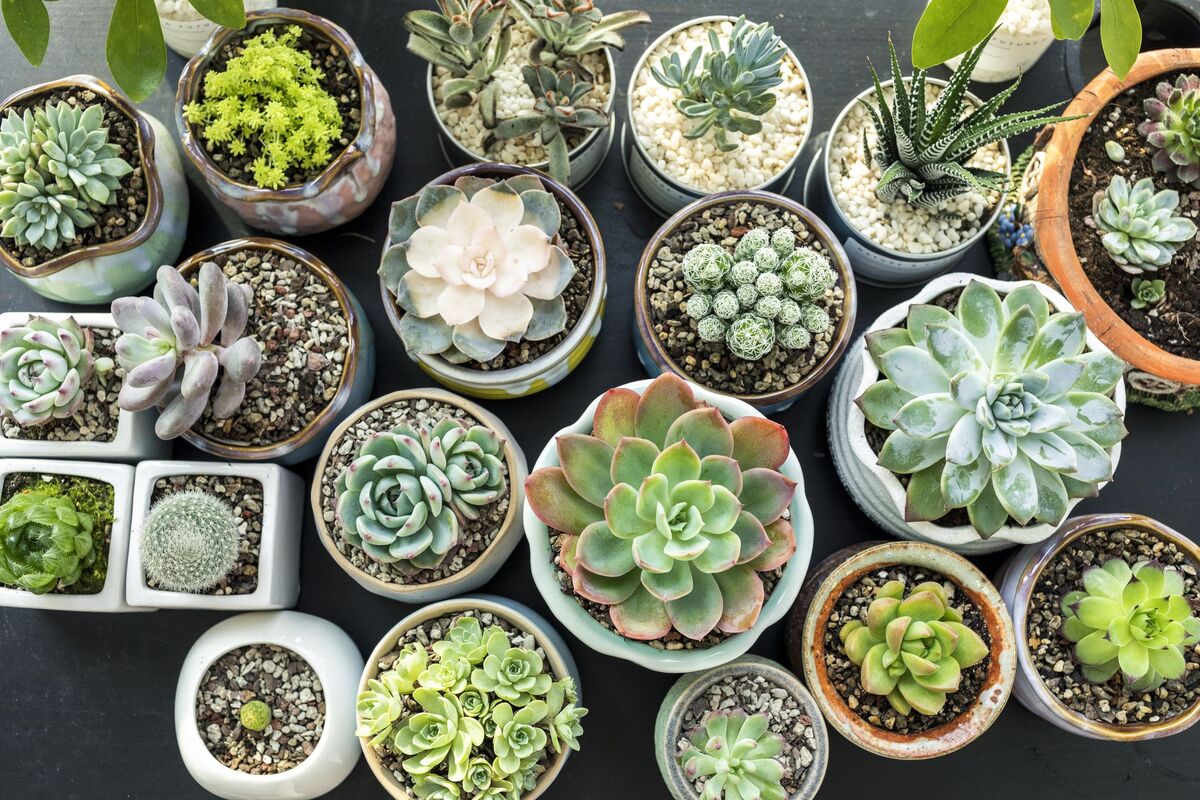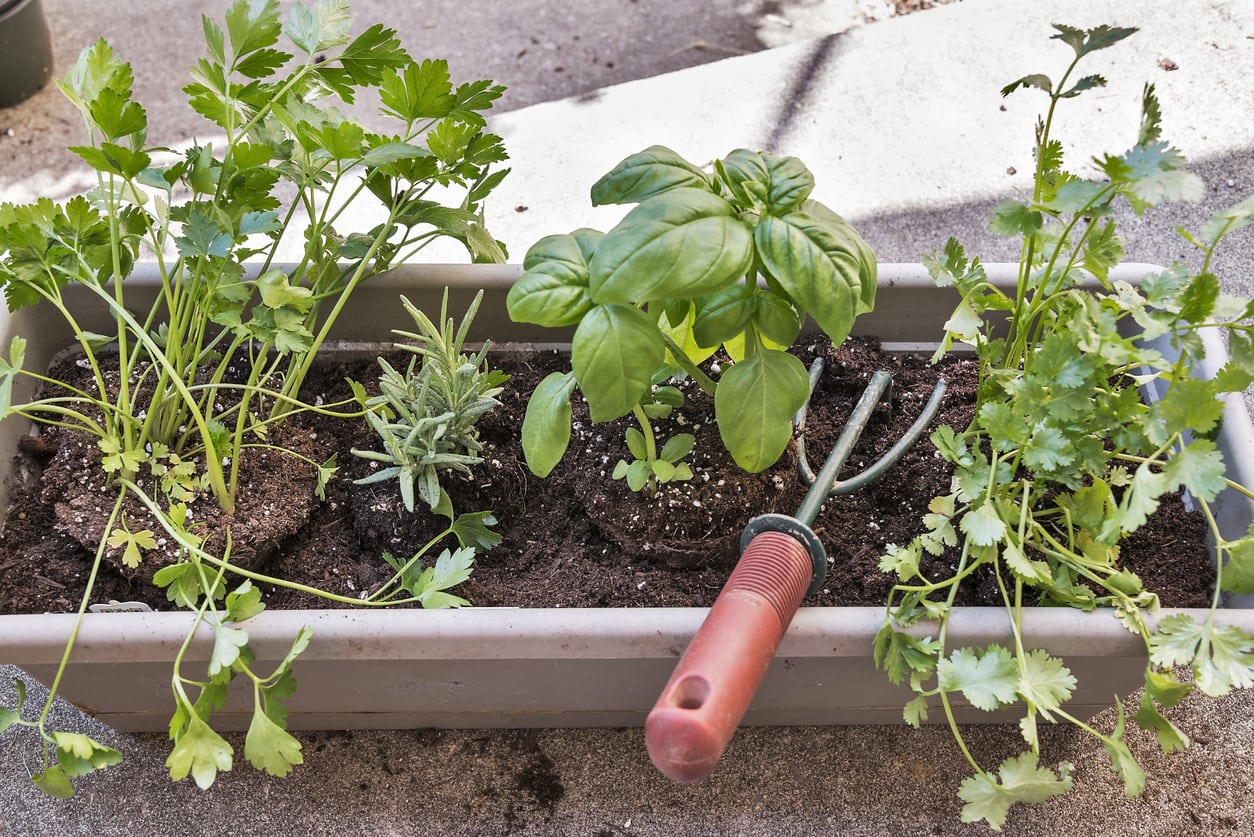Home>Gardening Techniques>Plant Care>What Is Companion Planting


Plant Care
What Is Companion Planting
Modified: January 22, 2024
Discover the benefits of companion planting and how it can improve your plant care. Enhance growth, deter pests, and maximize your garden's potential with strategic plant combinations.
(Many of the links in this article redirect to a specific reviewed product. Your purchase of these products through affiliate links helps to generate commission for Chicagolandgardening.com, at no extra cost. Learn more)
Table of Contents
Introduction
When it comes to caring for your plants, there is more to it than just watering and providing sunlight. A crucial aspect of plant care involves understanding the concept of companion planting. This age-old technique is based on the idea that certain plants can benefit from being grown in close proximity to one another. By strategically selecting plant companions, you can create a harmonious and mutually beneficial environment in your garden.
Companion planting is rooted in the principle that certain plants have the ability to enhance the growth, health, and overall well-being of others. This practice dates back hundreds, if not thousands, of years and has been passed down through generations of gardeners. Traditional wisdom, coupled with scientific research, supports the idea that companion planting can offer numerous advantages for plant growth and pest control.
The concept of companion planting follows the belief that certain plants have complementary characteristics that can help each other thrive. For example, some plants may attract beneficial insects that prey on garden pests, while others may act as repellents to deter harmful pests. In addition, certain plants have the ability to enrich the soil by fixing nitrogen or acting as natural fertilizers, benefiting neighboring plants that require nutrient-rich soil.
Companion planting is not only beneficial for the plants themselves but also for gardeners. By incorporating companion planting techniques in your garden, you can reduce the need for synthetic fertilizers and pesticides, create a diverse and visually appealing garden, and promote ecological balance. It is an environmentally friendly approach that fosters a healthy and sustainable garden ecosystem.
In this article, we will explore the various benefits of companion planting, the different types of companion planting techniques, and provide practical examples of common companion plant combinations. Additionally, we will discuss tips for successful companion planting and address potential challenges that may arise. Whether you are a beginner gardener or have years of experience, this article will serve as a comprehensive guide to harnessing the power of companion planting for your plants’ health and vitality.
Definition of Companion Planting
Companion planting can be defined as the practice of growing different plants in close proximity to take advantage of their mutually beneficial relationships. It involves strategically selecting and planting specific plants together based on their ability to enhance each other’s growth and overall health. These plant combinations can work together to deter pests, improve soil fertility, attract beneficial insects, and provide shade or support for one another.
The concept of companion planting is rooted in the idea that certain plants have natural affinities for one another. Some plants release chemicals through their roots or leaves that can either enhance the growth of neighboring plants or inhibit the growth of pests and diseases. By harnessing these natural relationships, gardeners can create a symbiotic environment that maximizes the potential of their plants.
Companion planting can be traced back to ancient agricultural practices. Native American tribes, as well as early European settlers, were known to employ companion planting techniques to improve crop yields and promote plant health. Over time, this knowledge has been passed down through generations, and modern scientific research has further validated the benefits of companion planting.
The beauty of companion planting lies in its versatility and adaptability. It can be implemented in various settings, including vegetable gardens, flower beds, and even container gardens. The key is to understand the specific needs and characteristics of each plant and find suitable companions that can complement and support one another.
It is important to note that companion planting is not a magical solution to all gardening problems. While it can provide numerous benefits, it is not a guarantee of success in every situation. Factors such as soil conditions, climate, and plant compatibility should be taken into consideration when implementing companion planting techniques.
In the following sections, we will explore the numerous benefits of companion planting, the different types of companion planting techniques, as well as provide practical examples of common companion plant combinations. By understanding the fundamentals of companion planting, you can unlock the potential to create a thriving and harmonious garden.
Benefits of Companion Planting
Companion planting offers a multitude of benefits for both plants and gardeners alike. By strategically selecting plant companions, you can create a harmonious garden ecosystem that fosters healthy growth and enhances overall plant vitality. Here are some key benefits of companion planting:
- Pest control: One of the primary benefits of companion planting is natural pest control. Some plants have the ability to repel or deter pests, acting as a natural barrier for neighboring plants. For example, planting marigolds alongside vegetables can help repel aphids and nematodes. The strong scent of marigolds masks the attractive scent of vegetables, reducing the likelihood of pest infestations.
- Attracting beneficial insects: Certain plants attract beneficial insects such as bees, butterflies, and ladybugs, which play a vital role in pollination and pest control. For instance, planting herbs like dill and fennel can attract beneficial insects that prey on common garden pests like aphids and caterpillars. By attracting these beneficial insects, companion plants can help maintain a balanced and healthy garden ecosystem.
- Improved soil fertility: Companion planting can also contribute to improved soil fertility. Some plants, like legumes (e.g., beans and peas), have the ability to fix nitrogen from the air and convert it into a form that is readily available to nearby plants. This natural nitrogen fixation enriches the soil and provides essential nutrients for the growth of neighboring plants.
- Conservation of space: Companion planting maximizes the use of garden space by interplanting compatible plants. For example, planting tall-growing plants like corn alongside vining plants like beans can provide vertical support for the beans, resulting in a more efficient use of space. This technique is known as the “Three Sisters” method and has been practiced by Native American tribes for centuries.
- Biodiversity and ecological balance: Companion planting promotes biodiversity by creating a diverse plant community in the garden. This diversity attracts a wide range of beneficial insects and pollinators, contributing to a balanced and resilient ecosystem. The varied collection of plants also helps prevent the spread of diseases and reduces the risk of widespread crop failure.
By utilizing companion planting techniques in your garden, you can minimize the use of synthetic pesticides and fertilizers, create a more sustainable and environmentally friendly growing environment, and ultimately enjoy healthier and more productive plants.
Types of Companion Planting
Companion planting encompasses various techniques and methods that can be employed in your garden. These different types of companion planting allow you to customize your approach based on the specific needs and goals of your plants. Here are some common types of companion planting:
- Trap Cropping: This method involves planting a sacrificial crop that lures pests away from the main crop. For example, planting a row of sunflowers near your vegetable garden can attract common pests like aphids or whiteflies, effectively protecting your vegetables from infestation.
- Intercropping: Intercropping is the practice of growing two or more different plants in close proximity to each other. This technique involves selecting plant combinations that have complementary growth habits or specific pest-deterring abilities. For instance, planting onions alongside carrots can help repel carrot flies, reducing the risk of damage to the carrots.
- Companion Plant Guilds: Companion plant guilds involve creating a grouping of plants with diverse characteristics that work synergistically to support each other’s growth. For example, a classic guild known as the “Three Sisters” includes planting corn, beans, and squash together. The corn provides vertical support for the beans, while the squash acts as ground cover, reducing weed growth and conserving soil moisture.
- Beneficial Attraction: This method focuses on attracting beneficial insects to your garden by planting specific flowers or herbs that are known to attract them. For instance, planting lavender or borage can attract bees, which aid in pollination, while also acting as a natural repellent for certain pests.
- Sequential Planting: Sequential planting involves planting different crops in succession to make the most efficient use of garden space and extend the growing season. For example, after harvesting a crop of lettuce, you can plant quick-growing radishes or beans to utilize the remaining space and maximize productivity.
These are just a few examples of the different types of companion planting techniques available. The key is to understand the specific needs and characteristics of your plants and select companion plants that can complement and enhance one another’s growth. By experimenting with different combinations and methods, you can find the most effective approach for your garden.
Examples of Common Companion Plant Combinations
Companion planting involves pairing specific plants together to harness their mutual benefits. By selecting the right combinations, you can create a thriving garden with improved pest control, increased crop yields, and overall healthier plants. Here are some common companion plant combinations that have proven to be successful:
- Tomatoes and Basil: Planting basil near tomato plants can benefit both crops. Basil repels pests like aphids and tomato hornworms, while also enhancing the flavor of tomatoes. This combination is not only beneficial but also makes for a delicious pairing in the kitchen.
- Carrots and Onions: Carrots and onions make great companions in the garden. Onions help deter carrot flies while carrots can help repel onion flies. Additionally, the taller onion plants can provide some shade and protection for the shorter carrot plants.
- Marigolds and Vegetables: Marigolds are often used as a companion plant for various vegetables. Their strong aroma repels pests like aphids, nematodes, and even rabbits. Planting marigolds among your vegetable plants can help deter unwanted pests and create a visually appealing garden.
- Cucumbers and Radishes: Cucumbers and radishes make a great pair in the garden. Radishes not only mature quickly, making them great for intercropping, but they also help repel cucumber beetles. This combination can help protect your cucumber plants and promote healthier growth.
- Beans and Corn: The classic “Three Sisters” combination of beans, corn, and squash is a traditional Native American planting technique. The corn provides support for the climbing beans, while the beans fix nitrogen in the soil, benefiting both the corn and the squash. The squash acts as a natural mulch, suppressing weeds and conserving moisture.
These are just a few examples of the countless companion plant combinations you can utilize in your garden. The key is to consider the specific needs and characteristics of each plant and select companions that can enhance growth, deter pests, and improve overall plant health. Observe and experiment with different combinations to find what works best for your garden.
Tips for Successful Companion Planting
While companion planting can offer numerous benefits for your garden, it is important to follow some key tips to ensure successful implementation. These tips will help you maximize the potential of companion planting and create a thriving garden ecosystem:
- Research and plan: Before planting, research the specific requirements and characteristics of each plant. Consider factors such as sun exposure, soil acidity, and water needs to ensure compatibility between companion plants.
- Rotate crops: Practice crop rotation to prevent the buildup of pests and diseases. Avoid planting the same companions in the same spot each year. Rotate different plants and companion combinations to maintain soil health and balance.
- Consider plant height: When selecting companion plants, consider their height and growth habits. Plant taller companions where they won’t shade or overshadow shorter plants, and use climbing companions to take advantage of vertical space.
- Plant in groups: Instead of scattering companion plants randomly, plant them in groups or clusters. This will create a more effective barrier against pests and provide a concentrated source of beneficial factors, such as scent or shade.
- Observe and adapt: Pay attention to how your plants respond to their companion combinations. Observe for any signs of nutrient deficiencies, pest issues, or overcrowding. Adjust and experiment with different combinations to find the most successful pairings for your specific garden.
- Maintain proper spacing: Provide adequate space between plants to allow for proper air circulation and prevent overcrowding. This will help reduce the risk of fungal diseases and allow companion plants to coexist without competing for resources.
- Complement with other practices: Companion planting works best when combined with other organic gardening practices. Use organic mulch, proper watering techniques, and regular soil testing to create an optimal growing environment for your plants.
- Keep records: Maintain a garden journal to keep track of companion plant combinations, their performance, and any observed successes or challenges. This will help you make informed decisions in future planting seasons and improve your overall gardening knowledge.
By following these tips, you can set yourself up for successful companion planting in your garden. Remember that every garden is unique, and it may take some trial and error to find the best companion combinations for your specific conditions. Enjoy the process, and let nature guide you towards creating a thriving and harmonious garden.
Potential Challenges in Companion Planting
While companion planting can offer numerous benefits, it is important to be aware of potential challenges that may arise when practicing this gardening technique. Being prepared for these challenges will help you navigate them successfully and maximize the effectiveness of your companion planting efforts:
- Plant compatibility: Not all plants make good companions. Some plants may have conflicting growth requirements, such as different sunlight or moisture needs. It is crucial to research and select companion plants that have similar requirements to ensure they can coexist harmoniously.
- Pest attraction: While companion plants can help deter pests, they may also attract certain pests. For example, planting flowers to attract beneficial insects may also attract other insects or pests. Regular monitoring and appropriate pest control measures may be necessary to maintain a healthy balance.
- Competitive growth: Some companion plants may compete with each other for resources such as light, water, and nutrients. Carefully consider the spacing requirements and growth habits of each plant to prevent overcrowding and ensure optimal growth for all companions.
- Timing and maturity: Companion plants may have different growth rates and maturity periods. This can result in one plant outgrowing or shading another, impacting their growth and productivity. Consider the growth and maturity timelines of each companion plant to ensure they are well matched in terms of development.
- Soil nutrient imbalances: Certain companion plant combinations can cause imbalances in soil nutrients. For example, planting heavy feeders together may deplete the soil of certain nutrients faster. Regular soil testing and amending with organic matter or balanced fertilizers can help maintain nutrient levels and prevent deficiencies.
- Plant disease transfer: Some plants are more susceptible to certain diseases than others. If a companion plant is infected with a disease, it can potentially spread it to other plants in close proximity. Regular inspection and prompt removal of infected plants can help prevent the spread of diseases.
- Herbicide compatibility: If using herbicides or weed control methods in your garden, it is important to consider the compatibility of these treatments with your companion plants. Some herbicides may harm or even kill certain companion plants, so always read and follow the instructions on herbicide labels carefully.
- Garden layout: Designing an effective companion planting layout can be a challenge, especially if you have limited space or specific plant requirements. Consider the size, shape, and growth habits of your companion plants when planning the layout to optimize their coexistence and overall garden productivity.
By being aware of these potential challenges and taking proactive measures, you can overcome them and minimize their impact on your companion planting endeavors. With careful planning, research, and experimentation, you can create a successful and harmonious garden ecosystem.
Conclusion
Companion planting is not only a practical gardening technique but also a testament to the intricate relationships that exist in nature. By strategically selecting and pairing plants based on their mutual benefits, gardeners can create thriving ecosystems that promote plant health, improve pest control, and enhance overall garden productivity.
Throughout this article, we have explored the definition of companion planting, the benefits it offers, various types of companion planting techniques, and examples of common companion plant combinations. We have also discussed tips for successful companion planting and potential challenges that may arise.
It is important to approach companion planting with curiosity, experimentation, and observation. Every garden is unique, and what works well for one gardener may not work the same for another. Through trial and error, you will discover the most effective companion plant combinations for your specific garden conditions.
By incorporating companion planting techniques into your gardening practices, you can foster a sustainable and harmonious garden ecosystem. You will reduce the need for synthetic pesticides and fertilizers, encourage biodiversity, and promote a healthier and more productive garden overall.
Remember to conduct research on plant compatibility, consider the growth habits and requirements of each plant, and make adjustments as needed. Pay attention to the relationships between different plants in your garden and strive to create a balanced and thriving environment.
Companion planting is an ongoing journey of learning and discovery. Embrace the process, be open to experimentation, and enjoy the benefits of a vibrant and abundant garden that comes with harnessing the power of companionship among your plants.










